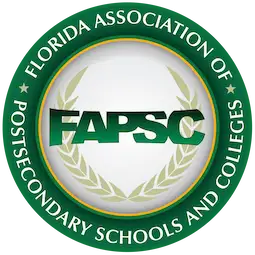Guide to the Ability to Benefit Program
Education is a big part of a person’s potential and eventual success—students with higher education are more likely to land high-paying jobs. However, with the rising cost of education, many students don’t enroll in post-secondary education and end up with low-paying jobs where their education level may also limit their ability to rise in the ranks.
According to the National Center for Education Statistics (NCES), unemployment decreases and earnings increase with a higher education level. Their analysis showed that the median earnings of those with a master’s degree are roughly 17% higher than those with only a bachelor’s degree. The difference between bachelor’s degree holders and high school graduates is much more significant at 63%.
With the growing skills gap in the US, it’s particularly concerning that 8.9% of individuals aged 25 years and older have less than a high school diploma.
But hope is not lost for those who want to pursue higher education. People can leverage the Ability to Benefit program to increase their chances of landing that dream job.
What is the Ability to Benefit Program?
The Ability to Benefit (ATB) is a grant under the US Higher Education Act (HEA) that provides students the opportunity to pursue post-secondary education without a high school diploma. ATB is for students who can show they have the “ability to benefit” from a college education. The provision bases its funding on income and can provide students with up to 100% of tuition costs, books, and other fees.
ATB serves as a critical entry point to higher education, particularly for individuals with lower skills. The career pathway under the program is ideal for under-educated adults to address achievement gaps.
Eligibility
The program allows students to join a career pathway program and an adult education at the same time. To qualify, students must:
- Be at least 16 years old
- Not have a high school diploma or completed a General Equivalency Diploma (GED)
- Meet any one of the following:
- Have six credits (or equivalent) toward a certificate or degree
- Pass an examination recognized by the US Department of Education
- Fulfill a state process approved by the US Secretary of Education
Taking the Ability to Benefit Test
The Florida Department of Education recently announced that institutions could use either a common placement method or an alternative method to test students’ college readiness. Please check the Florida Department of Education website for the common placement tests and alternative methods accepted by the state.
When Taking the ATB Test
Most testing centers are by appointment. For students with a referral from Federal Financial Aid, it’s best to call the testing center’s hotline to schedule an exam.
On the day of the exam, individuals must present a valid ID, such as:
- High School ID
- Current Passport
- Latest State or Federal ID
- Driver’s License
- Tribal ID
- Certificate of Citizenship
- Naturalization Card
Note: No other items will be allowed inside the testing center.
Retesting
Students who fail to achieve the minimum score required for reading, writing, and math can retake the exam after a two-week study period. Students may only retake the test sections they failed.
Courses You Can Take while Taking GED
ATB students must be enrolled in adult education and post-secondary coursework in an eligible career pathway program (ECPP) to maintain their eligibility. Here are some courses students can take along with their GED:
Medical Assisting
The medical assisting program is open to students using the ATB. Medical assisting programs usually last from nine to 12 months and provide students with the necessary skills and knowledge to enter the healthcare field.
Once a student completes an associate degree, they can have more opportunities for higher pay and career advancement.
Dental Assisting
Dental assisting programs prepare students to gain employment in the dental field, working closely with dentists to provide patient care and perform clinical tasks. This program usually takes around 34 weeks to complete and lets students receive intensive knowledge in dental practice.
Pharmacy Technician
Students can also take a pharmacy technician program that allows them to assist pharmacists as they support patients with their medications. They can work in various pharmaceutical industries (community, hospital, production, or sales). Their role involves filling order prescriptions and discussing concerns about medications.
Programs typically last from 10 to 12 months.
Nursing Assistant
A nursing assistant program includes a curriculum that teaches students nursing theory and practice. Students will learn the basics of medical care and receive hands-on training to help them provide the best patient care possible.
Veterinary Assisting
Those interested in animal care can take a veterinary assistant training program designed to provide them with theoretical and practical knowledge. They will learn the best animal care practices while providing critical support and assistance to veterinary professionals.
Completion of this program takes 10 months.
Take Advantage of the Ability to Benefit Program
If you’re interested in pursuing higher education and improving your career pathway, the ATB program is a great stepping stone. HCI College encourages you to consult a career counselor to understand how you can align your education plans with your career goals.
Explore our Eligible Career Pathway Programs (ECPP) section to learn more about our offerings.
If you found this article helpful, please share it with your friends!












